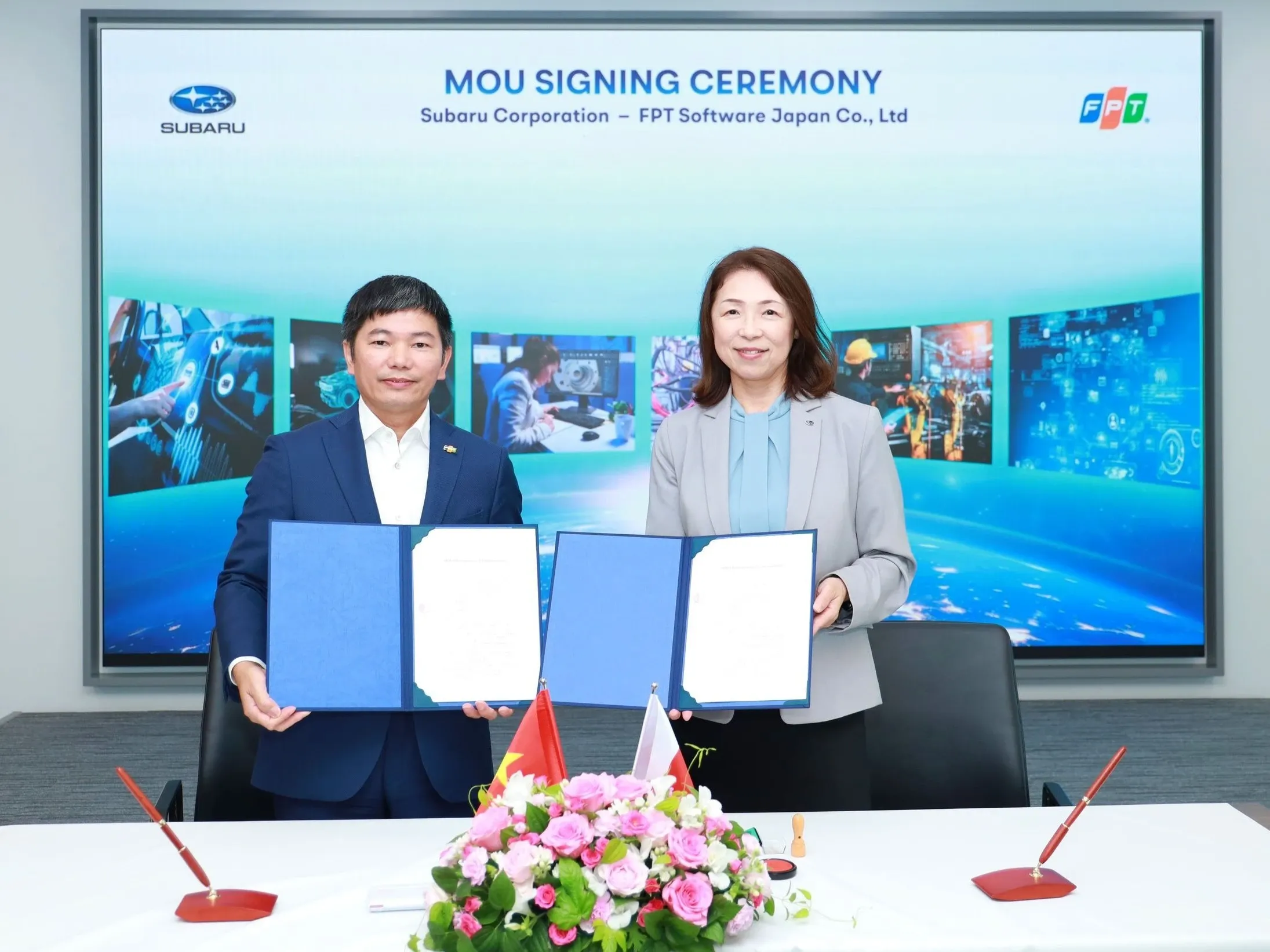

Revving Towards Future Mobility: SAP S/4HANA for Automotive Industry
09-11-2023

<p class="MsoNormal"><span style="font-family: "Segoe UI", sans-serif;"><font color="#ffffff">The automotive industry will demand more advanced technologies to accommodate the future of mobility effectively. As automotive software is projected to reach USD 40.1 billion by 2027 </font><font color="#0000ff">[1]</font><font color="#ffffff">, companies can leverage the power of SAP S/4HANA to:</font></span></p><ul><li><font face="Segoe UI, sans-serif" color="#ffffff"> - Manage charging stations.</font></li><li><font face="Segoe UI, sans-serif" color="#ffffff"> - Streamline data management.</font></li><li><font face="Segoe UI, sans-serif" color="#ffffff"> - Drive scalability and speed</font></li><li><font face="Segoe UI, sans-serif" color="#ffffff"> - Promote sustainability.</font></li></ul><p class="MsoNormal"><span style="font-weight: bolder;"><span style="font-size: 14pt; line-height: 19.9733px; font-family: "Segoe UI", sans-serif;"><font color="#ffffff">SAP E-mobility: One-stop solution to manage EV charging networks<o:p></o:p></font></span></span></p><p class="MsoNormal"><span style="font-family: "Segoe UI", sans-serif;"><font color="#ffffff">Seamless charging infrastructure management is critical for electric vehicles (EVs). Hence, SAP E-mobility emerges as a solution to tackle the complexities of managing electric vehicle charging networks with the following features:<o:p></o:p></font></span></p><p class="MsoNormal"><span style="font-weight: bolder;"><i><span style="font-family: "Segoe UI", sans-serif;"><font color="#ffffff">Charge Point Device Management<o:p></o:p></font></span></i></span></p><p class="MsoNormal"><span style="font-family: "Segoe UI", sans-serif;"><font color="#ffffff">SAP E-mobility enables businesses to monitor and manage their entire charging infrastructure. This includes tracking the status of charging stations and ongoing charging sessions. The platform establishes a connection with various vendor-independent charging infrastructure systems through its bidirectional communication capabilities utilizing Open Charge Point Protocols. This feature ensures that businesses are not tied to specific hardware or software providers, allowing operators to choose components that best fit their needs and budget.<o:p></o:p></font></span></p><p class="MsoNormal"><span style="font-family: "Segoe UI", sans-serif;"><font color="#ffffff">The platform further simplifies Electric Vehicle Supply Equipment (EVSE) onboarding and configuration processes, EV authorization, badge management, APIs, and integration with power grids. Compared to traditional configuration processes of EV infrastructure components, SAP E-mobility can reduce the time and effort required for setup, configuration, and integration. Besides, EV infrastructure management involves multiple components, from charging stations to power grids and authorization systems. Simplified onboarding and configuration processes eliminate unnecessary complexities and technical barriers. Thus, it is easier for operators to manage and maintain their charging networks.<o:p></o:p></font></span></p><p class="MsoNormal"><span style="font-weight: bolder;"><i><span style="font-family: "Segoe UI", sans-serif;"><font color="#ffffff">Charging Session Management<o:p></o:p></font></span></i></span></p><p class="MsoNormal"><span style="font-family: "Segoe UI", sans-serif;"><font color="#ffffff">SAP E-mobility platform allows intelligent energy management across multiple power grid strings. According to research, it would take roughly 800 to 1,900 billion kWh of electricity to power all vehicles if they were EVs in 2019. Supposedly, if all cars had been EVs, the US would have consumed 20-50% more electricity </font><font color="#0000ff">[2]</font><font color="#ffffff">. By optimizing energy pricing and meeting grid constraints, businesses can effectively balance their energy consumption and minimize costs. Real-time insights into charging processes, energy expenses, and power grid utilization provide operators with valuable data to make informed decisions.<o:p></o:p></font></span></p><p class="MsoNormal"><span style="font-family: "Segoe UI", sans-serif;"><font color="#ffffff">Furthermore, the integration of intelligent load management ensures power grid-compliant charging. This feature adjusts charging loads to avoid grid overloads, optimizing energy distribution and minimizing the risk of disruptions. This is especially crucial in scenarios where multiple EVs charge simultaneously, preventing strain on the power infrastructure.<o:p></o:p></font></span></p><p class="MsoNormal"><span style="font-family: "Segoe UI", sans-serif;"><font color="#ffffff"> </font></span></p><p class="MsoNormal"><font color="#ffffff"><span style="font-family: "Segoe UI", sans-serif;"> </span><span style="font-weight: bolder;"><span style="font-size: 14pt; line-height: 19.9733px; font-family: "Segoe UI", sans-serif;">A comprehensive solution for a comprehensive data view<o:p></o:p></span></span></font></p><p class="MsoNormal"><span style="font-family: "Segoe UI", sans-serif;"><font color="#ffffff">SAP Digital Vehicle Suite can address the intricacies of data management within the context of vehicle operations, pricing structures, industry processes, and digital vehicle hubs. Specifically:</font></span></p><ul><li><font color="#ffffff"><font face="Segoe UI, sans-serif"><span style="font-weight: bolder;"> * Digital Vehicle Operations</span></font><br></font></li></ul><p class="MsoNormal"><span style="font-family: "Segoe UI", sans-serif;"><font color="#ffffff">SAP Digital Vehicle Suite facilitates the integration of vehicle-centric processes, including purchasing, sales, and logistics within the broader automotive value chain. This integration allows businesses to streamline operations and ensure a coherent data flow. The suite's embedded analytics empower users to generate comprehensive reports on vehicle sales, providing invaluable insights for informed decision-making. Fueled by configurable microservices, the modular and open process orchestration offers flexibility in adapting processes to specific needs while maintaining efficiency.</font></span></p><ul><li><font color="#ffffff"><font face="Segoe UI, sans-serif"><span style="font-weight: bolder;"> * Digital Vehicle Hub</span></font><br></font></li></ul><p class="MsoNormal"><span style="font-family: "Segoe UI", sans-serif;"><font color="#ffffff">Digital Vehicle Hub is a central repository for digital twins of vehicles. The hub seamlessly connects to diverse systems through its scalable system and open architecture, creating a unified ecosystem for data exchange. Additionally, automotive companies can leverage the SAP Digital Vehicle Hub to gain a comprehensive 360-degree view of their EVs. This visibility enables efficient fleet management, proactive maintenance, and optimized operational planning. With only 14% of organizations having achieved a 360-degree view, as revealed by Gartner </font><font color="#0000ff">[3]</font><font color="#ffffff">, automotive companies can leverage SAP E-mobility to understand their customers.<o:p></o:p></font></span></p><p class="MsoNormal"><span style="font-family: "Segoe UI", sans-serif;"><font color="#ffffff"> <o:p></o:p></font></span></p><p class="MsoNormal"><span style="font-weight: bolder;"><span style="font-size: 14pt; line-height: 19.9733px; font-family: "Segoe UI", sans-serif;"><font color="#ffffff">Driving scalability and speed<o:p></o:p></font></span></span></p><p class="MsoNormal"><span style="font-family: "Segoe UI", sans-serif;"><font color="#ffffff">By tapping into the collective insights of an industry network, businesses can predict risks and make well-informed decisions. This approach fosters scalability and accelerates operational speed thanks to its features:</font></span></p><ul><li><font color="#ffffff"><font face="Segoe UI, sans-serif"><span style="font-weight: bolder;"> * Parts Traceability</span></font><br></font></li></ul><p class="MsoListParagraphCxSpMiddle"><span style="font-family: "Segoe UI", sans-serif;"><font color="#ffffff">The automotive industry grapples with supply chain disruption due to COVID-19, with 41% of automotive corporations noting a financial impact of USD 50-100 million </font><font color="#0000ff">[4]</font><font color="#ffffff">. A core aspect of this integrated approach is parts traceability. Businesses can seamlessly track and trace serial numbers, batches, and components as they move across various organizations within the industry. This creates a robust data foundation that empowers Original Equipment Manufacturers (OEMs) and suppliers to respond promptly to anomalies, ensuring a seamless and efficient supply chain. Additionally, compliance with evolving regulations is facilitated, reducing the regulatory risks associated with supply chain management.</font></span></p><ul><li><font color="#ffffff"><font face="Segoe UI, sans-serif"><span style="font-weight: bolder;"> * Demand and Capacity Management</span></font><br></font></li></ul><p class="MsoListParagraphCxSpMiddle"><span style="font-family: "Segoe UI", sans-serif;"><font color="#ffffff">Visibility and proactive notifications are critical in maintaining a smooth operation. Integrated data management alerts businesses early in capacity shortages, delivery issues, and potential bottlenecks. According to research, 82% of data management decision-makers found that controlling and forecasting data costs were challenging </font><font color="#0000ff">[5]</font><font color="#ffffff">. This increased transparency extends to current and future demand and capacity scenarios, enabling informed decision-making. This way, automotive corporations can optimize capacity utilization and avoid over-capacities or shortfalls.</font></span></p><ul><li><font color="#ffffff"><font face="Segoe UI, sans-serif"><span style="font-weight: bolder;"> * Quality Management</span></font><br></font></li></ul><p class="MsoListParagraphCxSpLast"><span style="font-family: "Segoe UI", sans-serif;"><font color="#ffffff">Addressing quality-related challenges is streamlined through integrated data management. Swift identification of problems and initiation of containment actions save valuable time. Effective communication and resolution of part quality issues with suppliers contribute to quality improvement.<o:p></o:p></font></span></p><p class="MsoNormal"><span style="font-family: "Segoe UI", sans-serif;"><font color="#ffffff"> <o:p></o:p></font></span></p><p class="MsoNormal"><span style="font-weight: bolder;"><span style="font-size: 14pt; line-height: 19.9733px; font-family: "Segoe UI", sans-serif;"><font color="#ffffff">Ensuring sustainability is the key<o:p></o:p></font></span></span></p><p class="MsoNormal"><span style="color: rgb(255, 255, 255); font-family: "Segoe UI", sans-serif;">In pursuing a more sustainable future, industries are turning to innovative solutions to manage their environmental impact. With the emissions produced by passenger cars increasing to a peak of 3.2 million metric tons </span><a href="https://www.statista.com/statistics/1107970/carbon-dioxide-emissions-passenger-transport/#:~:text=Passenger%20cars%20produced%20approximately%20three,of%203.2%20million%20metric%20tons."><span style="font-family: "Segoe UI", sans-serif;"><font color="#0000ff">[6]</font></span></a><span style="color: rgb(255, 255, 255); font-family: "Segoe UI", sans-serif;">, SAP S/4HANA introduces advanced features tailored to the automotive sector.<o:p></o:p></span></p><p class="MsoNormal"><font color="#ffffff"><span style="font-weight: bolder;"><span style="font-family: "Segoe UI", sans-serif;">The Carbon Footprint Management</span></span><span style="font-family: "Segoe UI", sans-serif;"> feature within SAP S/4HANA offers transparency in tracing the carbon footprint of parts and components across the entire lifecycle. From production to distribution, each step is monitored, providing a general view of the carbon emissions associated with each element. This level of visibility enables businesses to gain insights into emission hotspots, facilitating targeted interventions for optimization. This feature can also ensure compliance with evolving environmental regulations, particularly those outlined by regional mandates such as the European Green Deal and Battery Directive. By adhering to these standards, businesses avoid penalties and actively contribute to larger sustainability goals.<o:p></o:p></span></font></p><p class="MsoNormal"><span style="color: rgb(255, 255, 255); font-family: "Segoe UI", sans-serif;">Identifying opportunities for meaningful carbon reduction is a critical aspect of sustainable operations. Thus, <span style="font-weight: bolder;">Strategic Carbon Reduction and Optimization</span> empowers businesses to pinpoint products and processes that offer the highest potential for carbon reduction. Armed with this data-driven insight, companies can strategically prioritize areas for optimization. As only 4.5% of countries have achieved carbon neutrality, </span><a href="https://pubmed.ncbi.nlm.nih.gov/35431715/"><span style="font-family: "Segoe UI", sans-serif;"><font color="#0000ff">[7]</font></span></a><span style="color: rgb(255, 255, 255); font-family: "Segoe UI", sans-serif;"> SAP S/4HANA can help the automotive industry allocate efforts to yield a positive impact on their carbon footprint.<o:p></o:p></span></p><p class="MsoNormal"><span style="color: rgb(255, 255, 255); font-family: "Segoe UI", sans-serif;">In addition, integrated data management enables businesses to enhance transparency regarding used materials and facilitates the recovery of valuable resources. Organizations can better plan the demand and supply of reusable components and recycled materials for production through data-driven insights from the Circular Economy Management feature. In fact, the circular economy approach enables automotive companies to increase revenues per vehicle by 15-20 times the sales price and significantly improve profitability by maximizing lifetime performance </span><a href="https://www3.weforum.org/docs/WEF_Driving_Ambitions-2022.pdf"><span style="font-family: "Segoe UI", sans-serif;"><font color="#0000ff">[8]</font></span></a><span style="color: rgb(255, 255, 255); font-family: "Segoe UI", sans-serif;">.<o:p></o:p></span></p><p class="MsoNormal"><span style="font-family: "Segoe UI", sans-serif;"><font color="#ffffff"> <o:p></o:p></font></span></p><p class="MsoNormal"><span style="font-weight: bolder;"><span style="font-size: 14pt; line-height: 19.9733px; font-family: "Segoe UI", sans-serif;"><font color="#ffffff">Speeding up to win the automotive race<o:p></o:p></font></span></span></p><p></p><p class="MsoNormal"><span style="font-family: "Segoe UI", sans-serif;"><font color="#ffffff">As the competition within the automotive industry intensifies, companies can strategically harness the power of SAP S/4HANA. By embracing this technology, automotive organizations can tap into a comprehensive and cutting-edge ERP solution that empowers them to streamline their operations, enhance decision-making with data analytics, and respond adeptly to sustainability best practices.</font></span></p>





